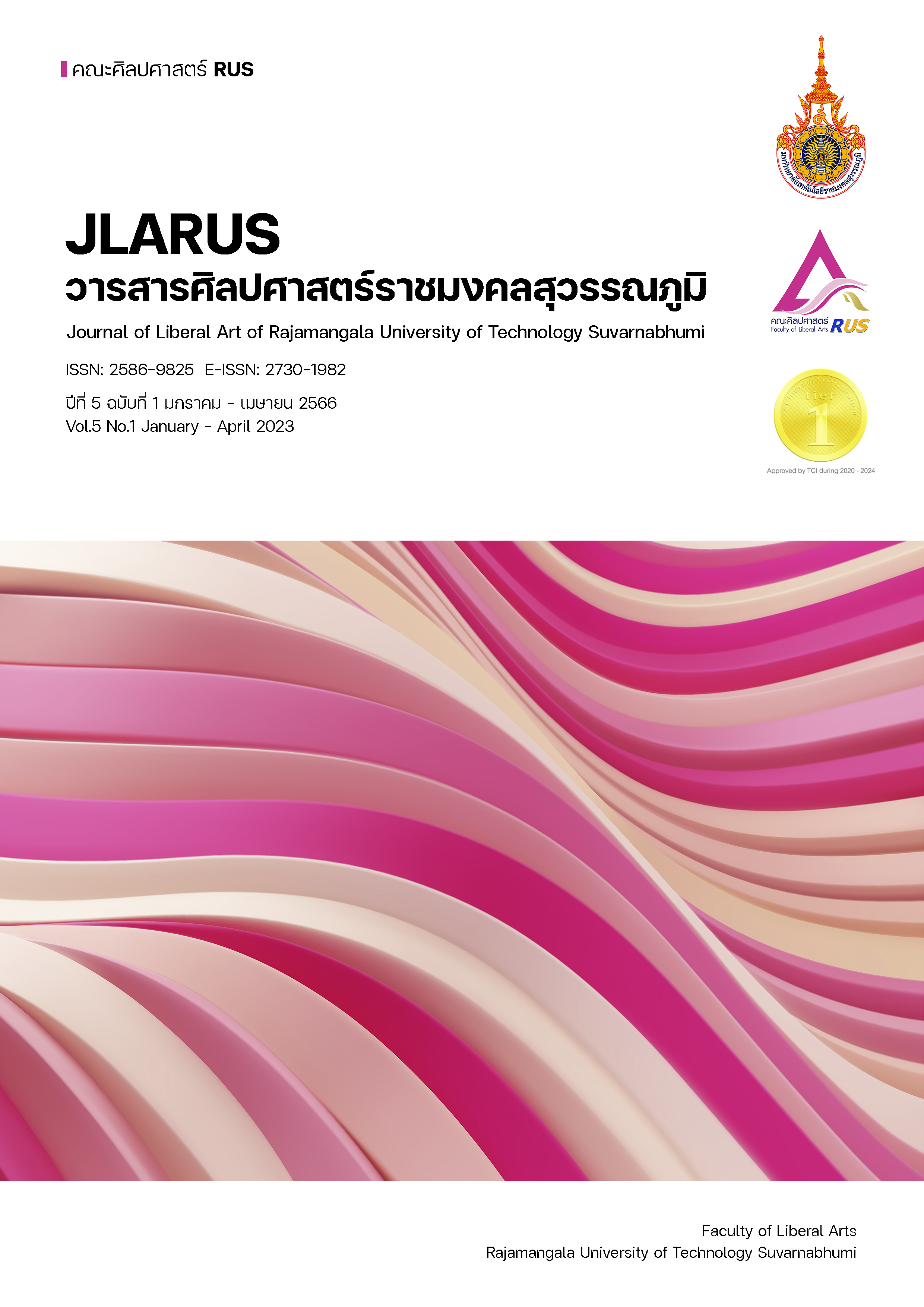VIPASSANAYANA STUDY BASED ON THE MAHA SATIPATTHANA SUTA TO DEVELOP ACADEMIC WORK
Main Article Content
Abstract
The objectives of this research were 1) to study and analyze the doctrines and the steps to follow the teachings of the Lord Buddha regarding the practice of Vipassana according to the Satipatthana Sutra in relation to the development of academic works and 2) to propose a model for developing academic works by practicing introspection according to the four Satipatthana Sutra which focuses on studying documents about the teachings about the practice of Vipassana 16 according to the Maha Satipatthana Sutta and standard criteria of the Civil Service Commission B.E. 2564.
The results of the research revealed that precepts, concentration and wisdom are the preliminary factor that will lead the instructors to develop academic works successfully. That is, precepts are the practice of correctness according to the principles of virtuous precepts, middle precepts, and great precepts, as well as practicing in the organic principle, sobriety and solitude to reduce greed, hatred and anger, which are in line with the 3) of the Eightfold Paths), namely, right speech and right action, right livelihood for meditation is to calm the mind. Training the mind to be stable as concentration including the practice of concentration, meditation of a meditator at the "First Jhana" level, which corresponds to the 3) of the Eightfold Path), right mindfulness, right meditation, and practices with noble precepts until attain the Four Jhana. Wisdom is the result of self-training to achieve wisdom clearly which corresponds to the (2fold path in 8) right thought and right view by practicing Vipassana meditation of the person who has meditated until attaining Vijja 8, i.e. becoming an Arahant in the end. In conclusion, develop academic works, including conducting research, writing documents, textbooks or books, and writing academic articles will be able to propose to apply for further academic positions.
Article Details

This work is licensed under a Creative Commons Attribution-NonCommercial-NoDerivatives 4.0 International License.
References
ณอภัย พวงมะลิ. (2561). การพัฒนาทรัพยากรมนุษย์โดยการปฏิบัติวิปัสสนากรรมฐานตามแนว สติปัฏฐานสี่ของศูนย์ปฏิบัติวิปัสสนากรรมฐานวัดถ้ำพระผาคอก อำเภอเวียงชัย จังหวัดเชียงราย. (วิทยานิพนธ์ปรัชญาดุษฎีบัณฑิต สาขาวิชาผู้นำการศึกษาและการพัฒนาทรัพยากรมนุษย์). เชียงใหม่: บัณฑิตวิทยาลัย มหาวิทยาลัยราชภัฏเชียงใหม่.
คณะกรรมการข้าราชการพลเรือนในสถาบันอุดมศึกษา. (2564). หลักเกณฑ์และวิธีการพิจารณาแต่งตั้งบุคคลให้ดำรงตำแหน่งผู้ช่วยศาสตราจารย์ รองศาสตราจารย์ และศาสตราจารย์. กรุงเทพมหานคร: คณะกรรมการข้าราชการพลเรือนในสถาบันอุดมศึกษา.
พระครูภาวนากิจสุนทร. (2562). การศึกษารูปแบบและกระบวนการสอนวิปัสสนากัมมัฎฐานจังหวัดนครศรีธรรมราช.
พระคันธสาราภิวงศ์. (2541). การเจริญสติปัฏฐาน. ลำปาง: จิตวัฒนาการพิมพ์.
พระพรหมคุณาภรณ์ (ป.อ.ปยุตโต). (2561). โพชฌงค์ พุทธวิธีเสริมสุขภาพ. กรุงเทพมหานคร: บริษัท ธรรมสาร จํากัด.
พระพยุง เมธาวี. (2561). การประยุกต์ใช้วิปัสสนากรรมฐานของวัดราษฎร์บำรุงหนองลีจังหวัดสิงห์บุรี.สาขาวิชาพระพุทธศาสนา มหาวิทยาลัยมหาจุฬาลงกรณราชวิทยาลัย.
พระมหาสัจจวัฒณ์ วชิรญาโณ (ฉัตรไทยแสง). (2560). การเจริญวิปัสสนาตามหลักสติปัฏฐาน 4 เพื่อการปรับบุคลิกภาพ. (วิทยานิพนธ์ปรัชญาดุษฎีบัณฑิต สาขาวิชาพุทธจิตวิทยา). พระนครศรีอยุธยา: บัณฑิตวิทยาลัย มหาวิทยาลัยมหาจุฬาลงกรณราชวิทยาลัย.
มหาจุฬาลงกรณราชวิทยาลัย. (2539). พระไตรปิฎกภาษาไทย ฉบับมหาจุฬาลงกรณราชวิทยาลัย.กรุงเทพมหานคร: มหาจุฬาลงกรณราชวิทยาลัย.
ลักษณาวดี แก้วมณี. (2558). เกณฑ์ตัดสินความเป็นวิปัสสนากัมมัฏฐานในสังคมไทย ตามหลักสติปัฏฐาน 4. สาขาวิชาพระพุทธศาสนา คณะพุทธศาสตร์ มหาวิทยาลัยมหาจุฬา ลงกรณราชวิทยาลัย.
อภินันท์ จันตะนี และคณะ (2562). คู่มือการพัฒนาผลงานวิชาการ. คณะสังคมศาสตร์, มหาวิทยาลัยมหาจุฬาลงกรณราชวิทยาลัย.


